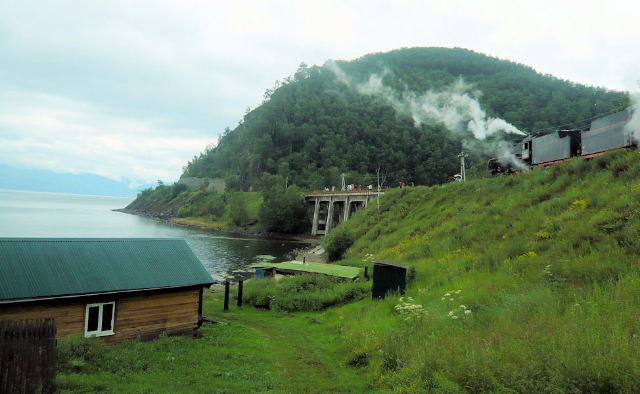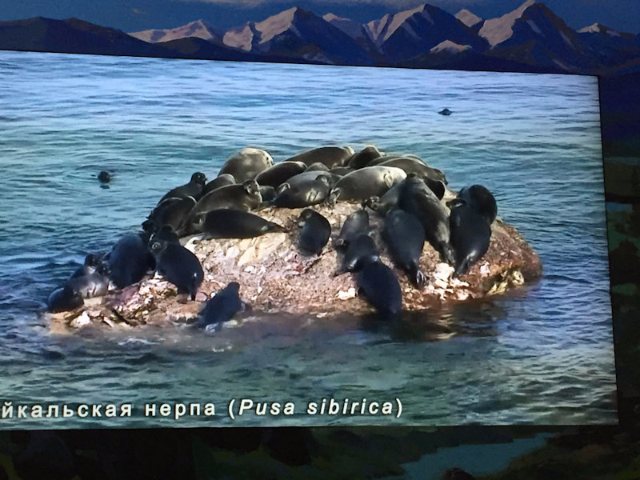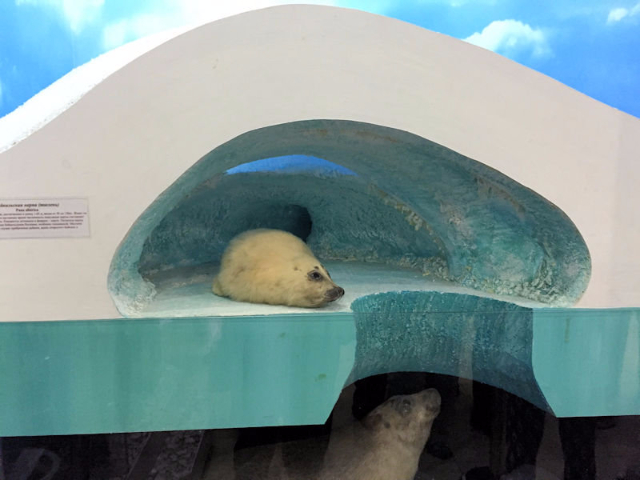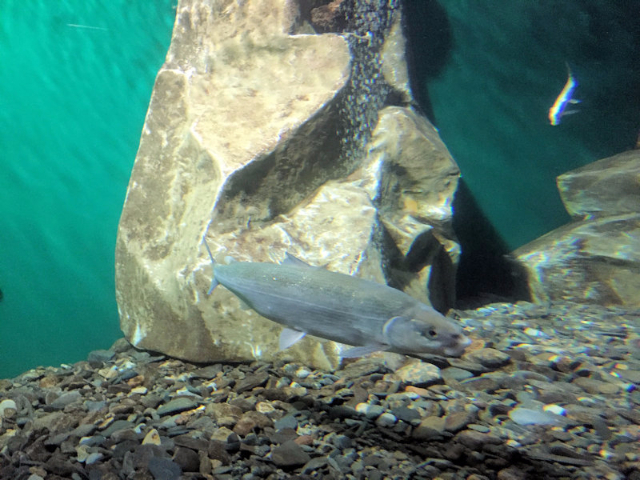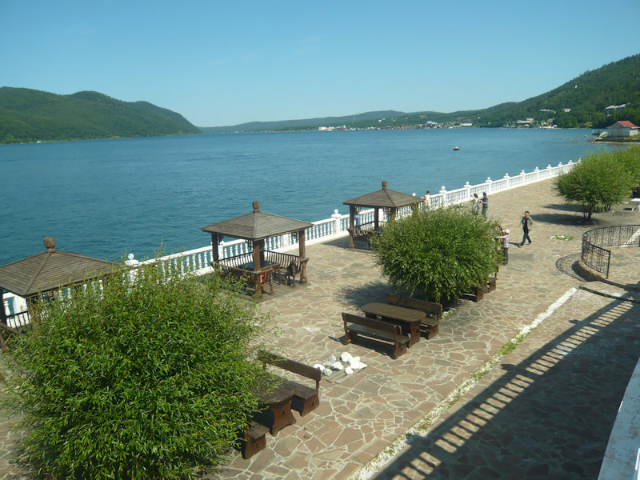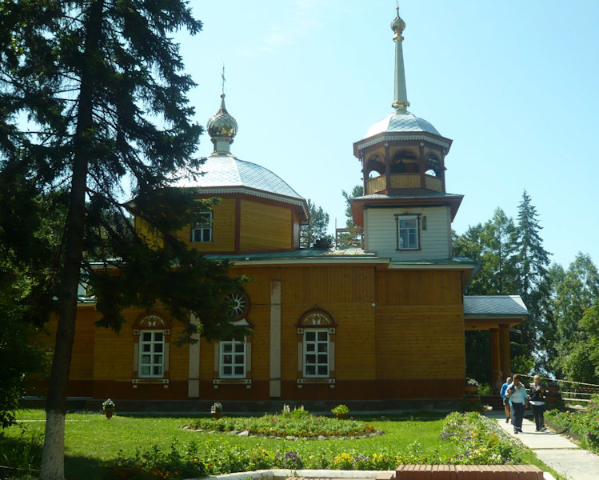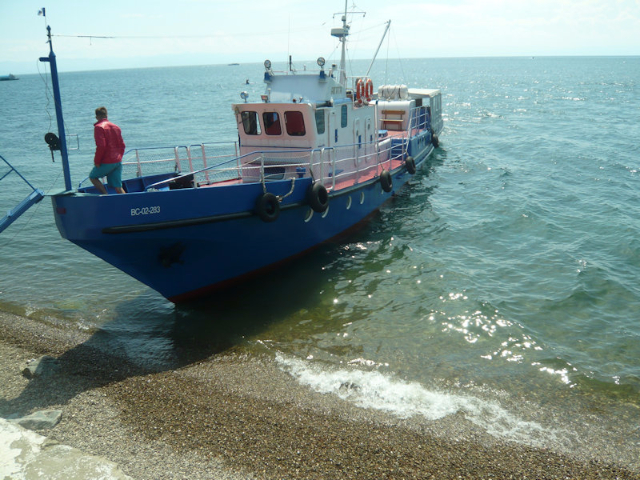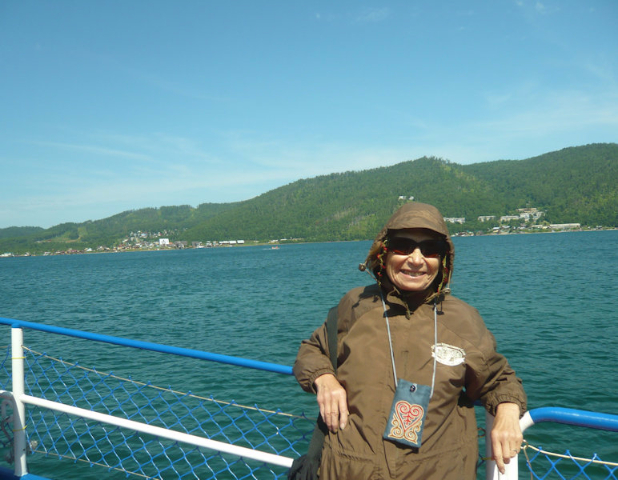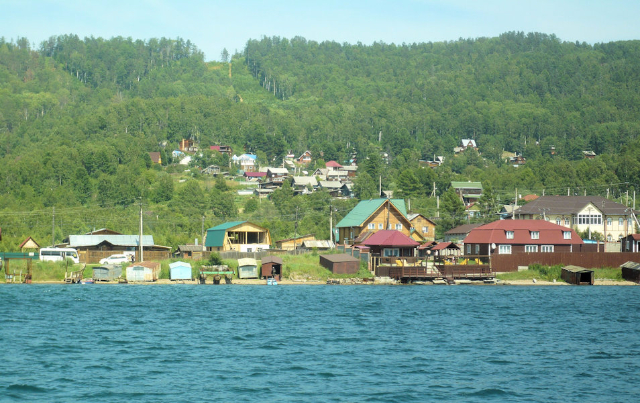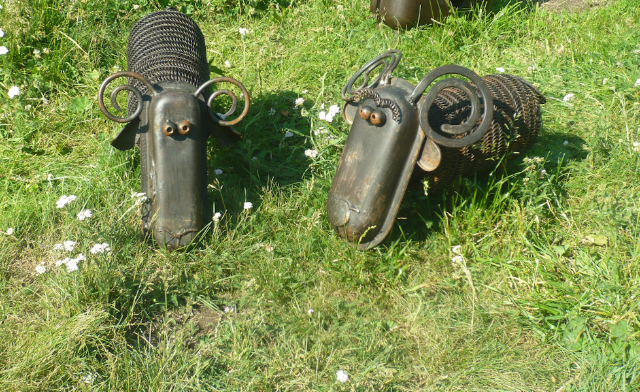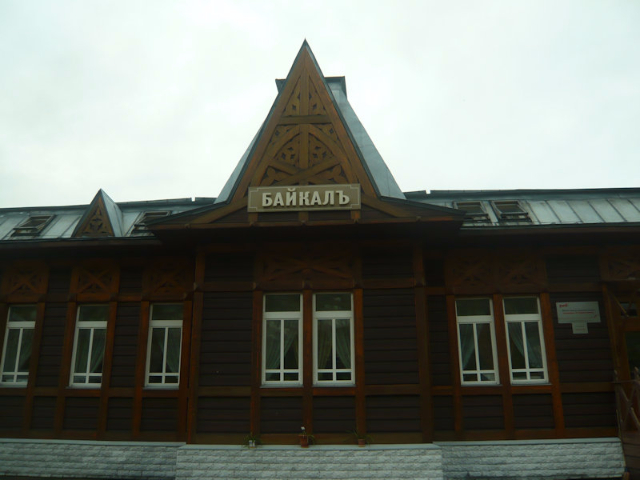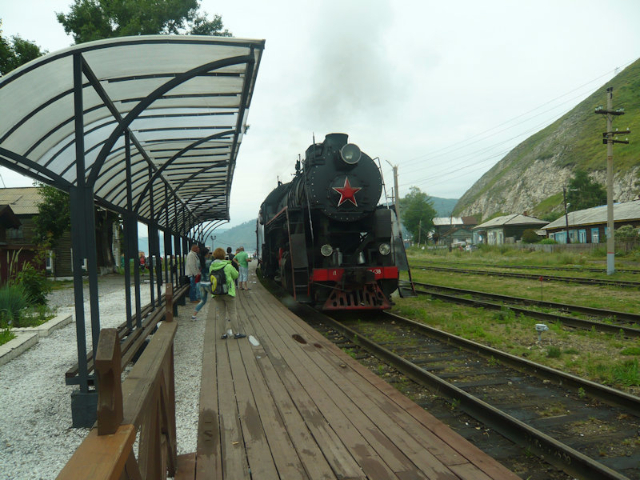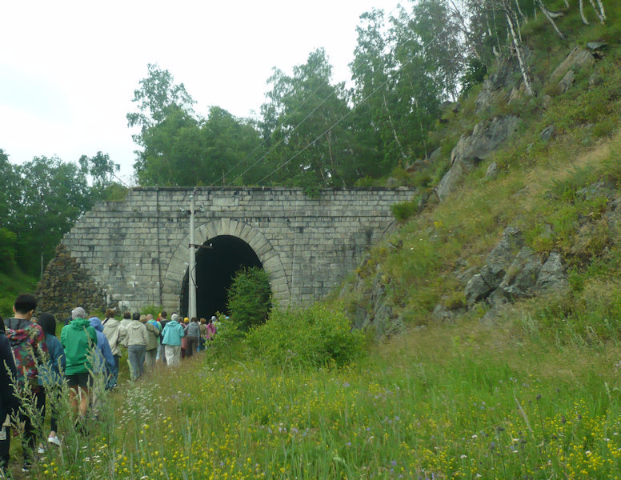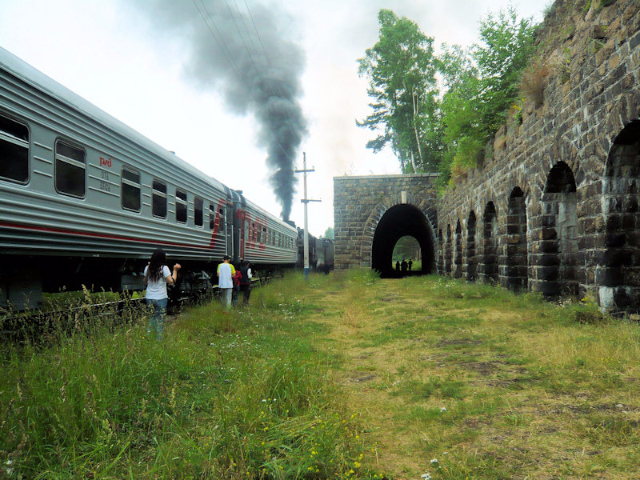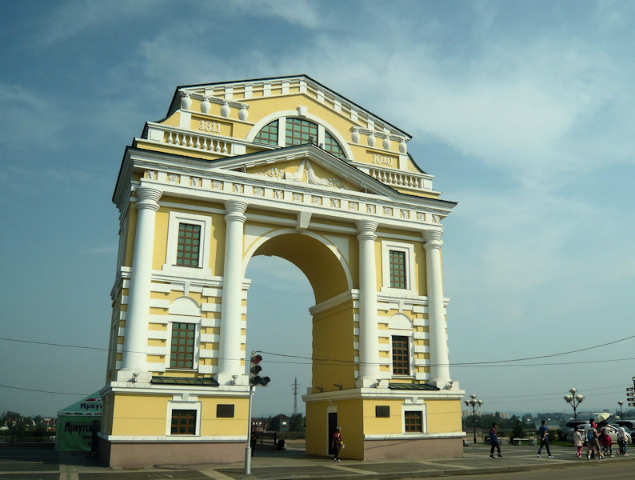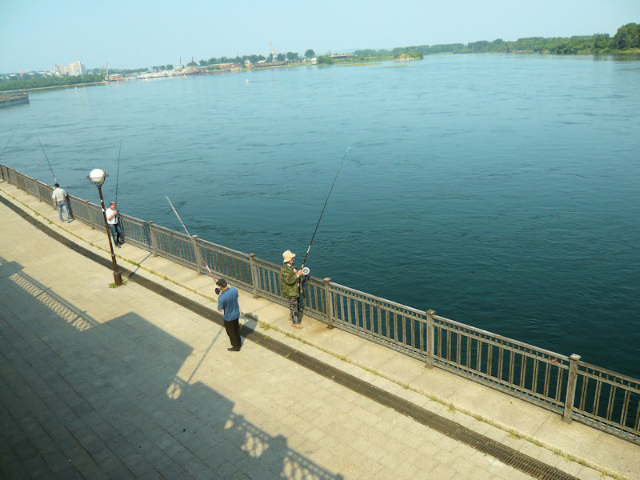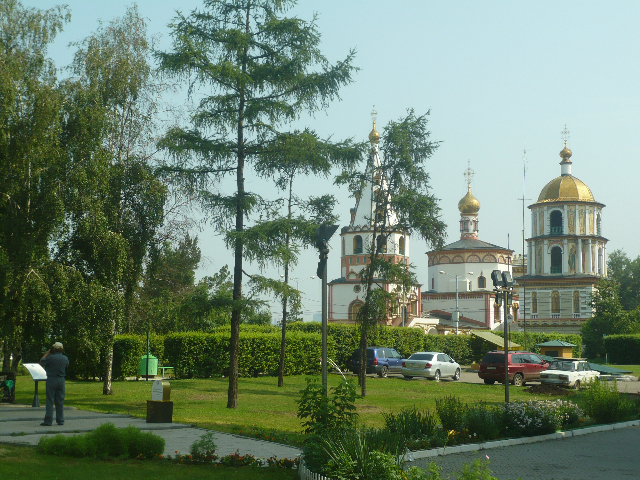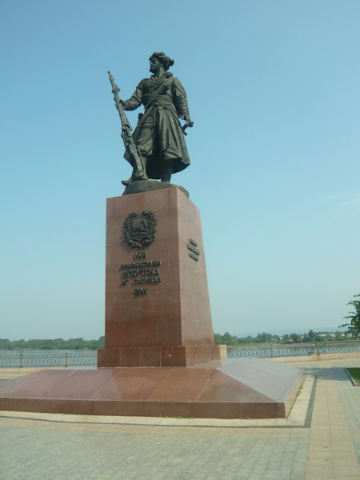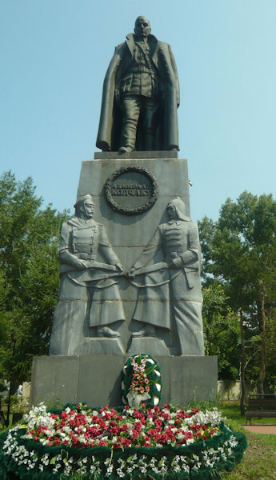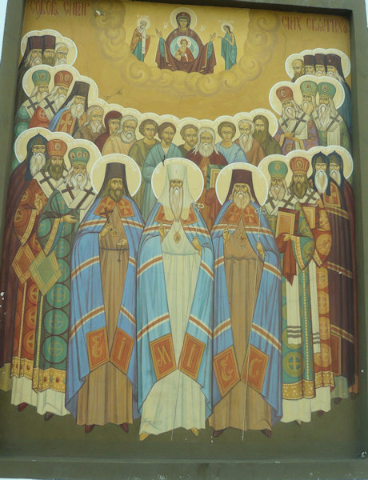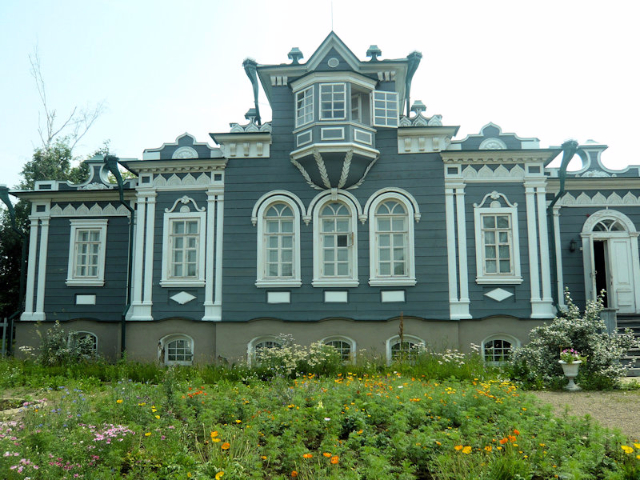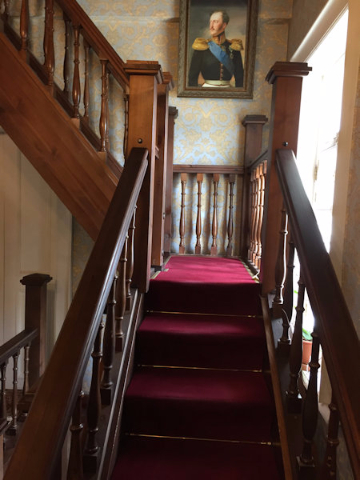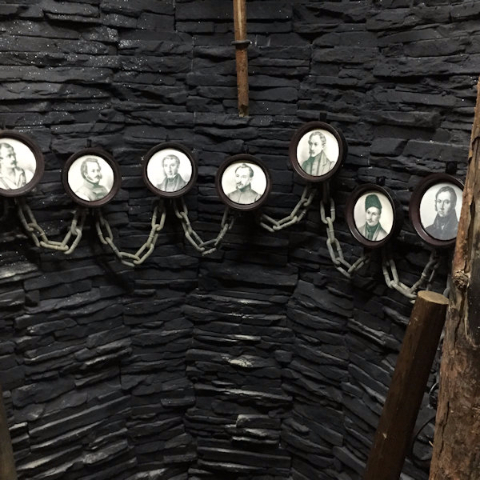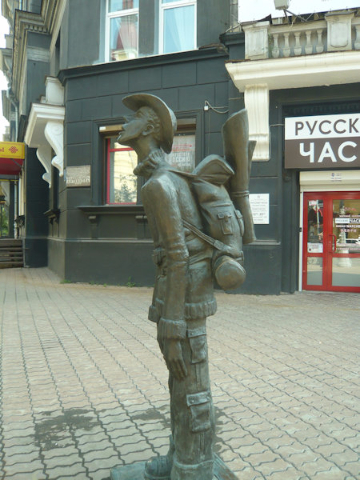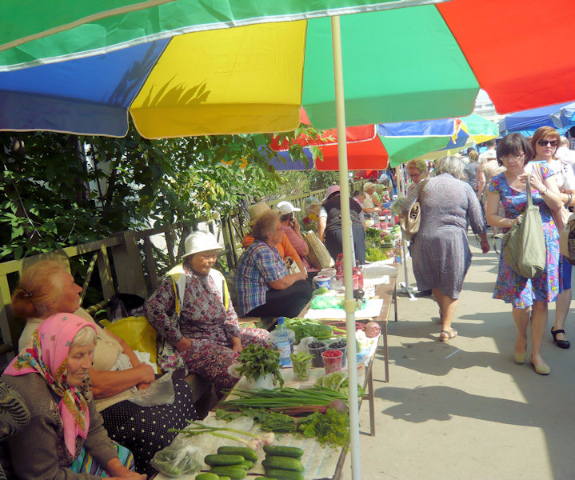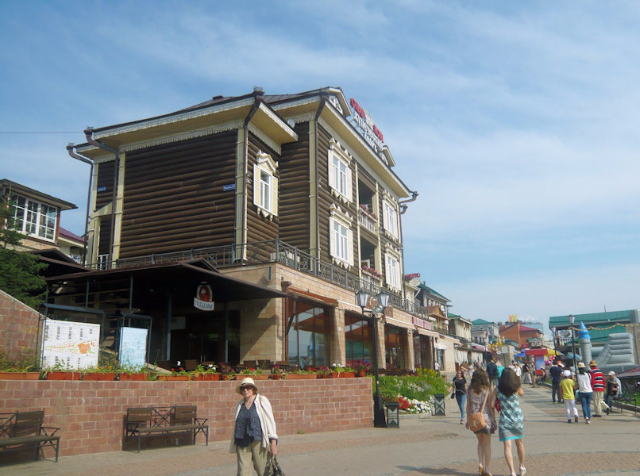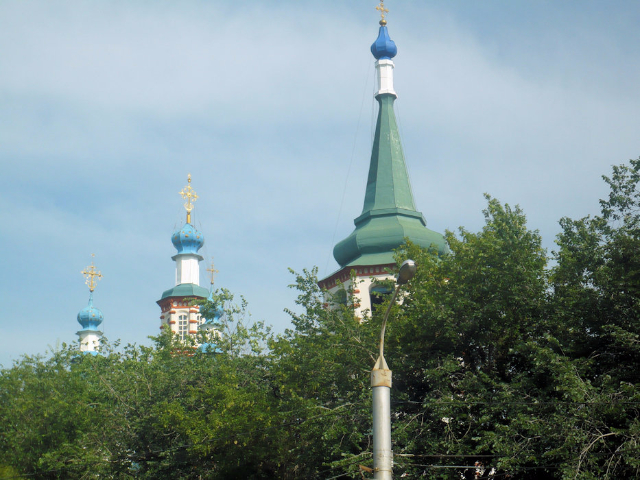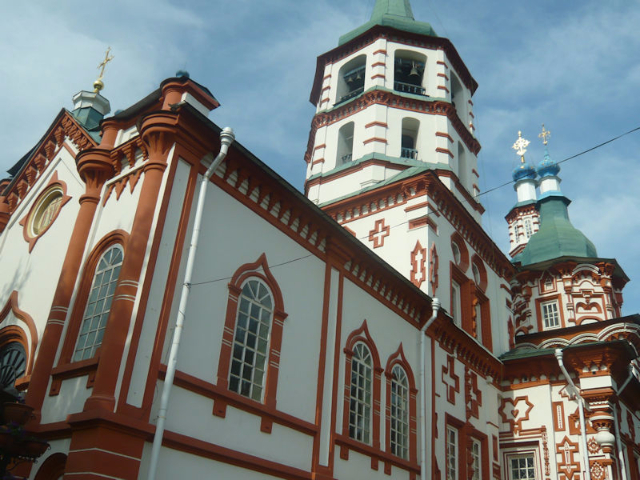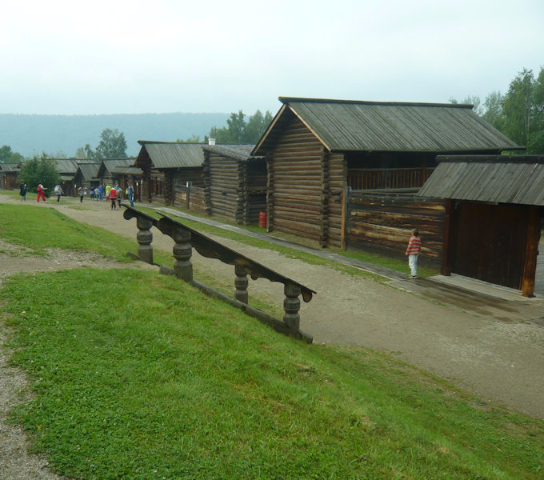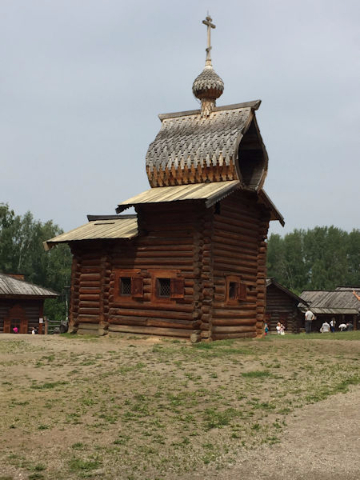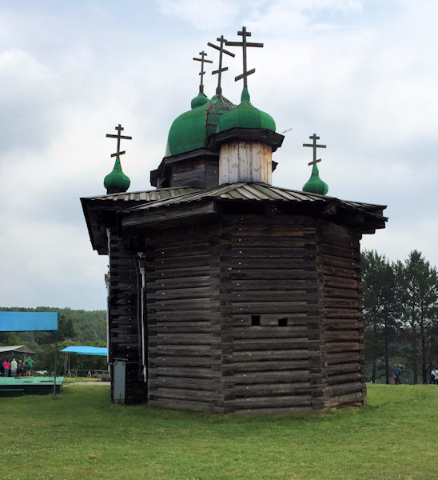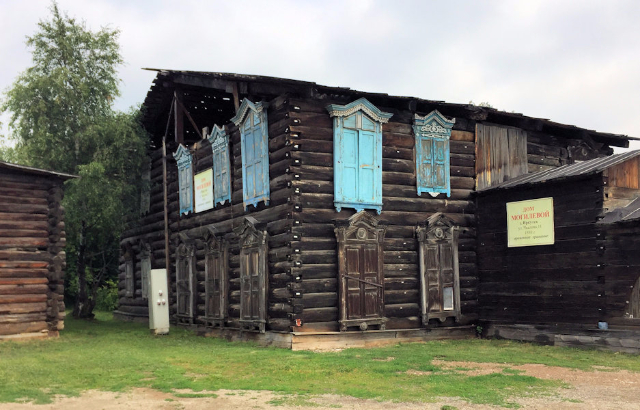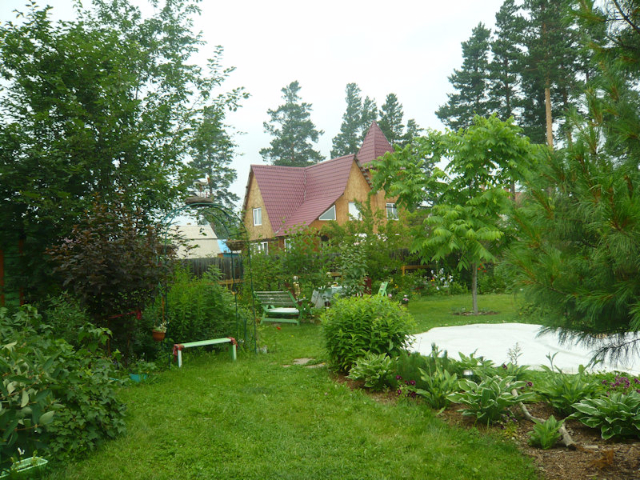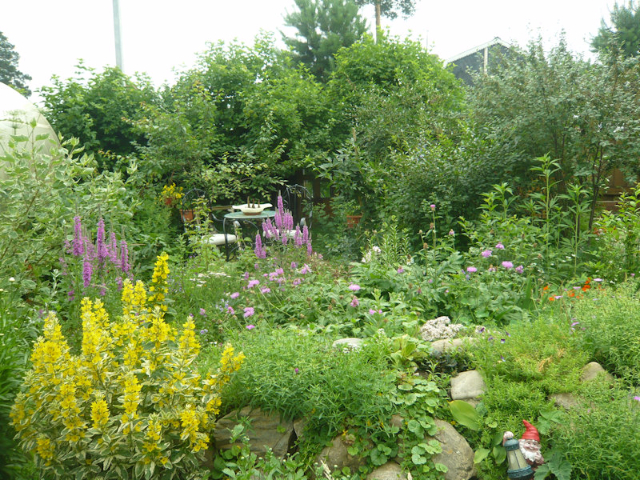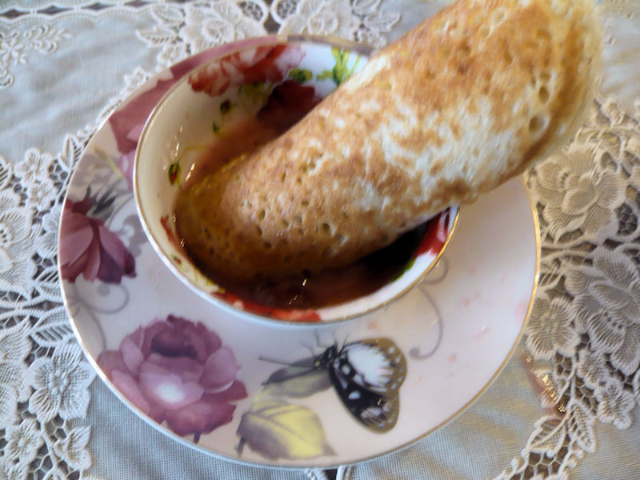Southern Siberia
Along Lake Baikal on the Trans-Siberian Railway
By: Zeren Earls - Jan 03, 2017
Following two memorable weeks in Mongolia, we flew from Ulaanbaatar to Irkutsk, capital of Eastern Siberia. During the hour-long flight on Mongolian Air, the steppes below quickly gave way to a landscape of rolling hills covered with thick subarctic evergreens. At the airport, which is a major connecting point for Asian countries to western Russia, we cleared passport control with relative ease despite the size of the crowds in July.
Our guide Ksenia, a petite, attractive young woman, met us at the exit gate and led us to a white van, explaining that we would be driving to Listvyanka, a village 65 km. away on the western shore of Lake Baikal, deferring our tour of Irkutsk until after our return to the city on the Trans-Siberian Railway. After a little over an hour on the road, we arrived at the Krestovaya Pad Hotel, our home for the next two nights. Feeling hungry, I settled for a bowl of borscht at the hotel’s restaurant and, shortly thereafter, quickly fell asleep.
Listvyanka is a charming small town; dating from 1648, it was settled by Russian Cossacks, who were hunters and fishermen. It developed as a port between merchants traveling from Asia to the West. Due to its attractive setting at the mouth of the Angara River and proximity to a network of hiking paths, it has also been developed into a resort with accommodations for visitors. Our tour began at the Limnology Museum, where we were introduced to the history of Baikal and its world of flora and fauna. Over 25 million years old, the rift lake is the world’s deepest at 1642 meters and holds 20% of its fresh water. The crescent-shaped lake is 636 km in length and 80 km at its widest. The museum’s aquarium has many of the lake’s 2600 endemic animals, including the Baikal seal, the world’s only freshwater species. The only mammal living in Baikal, the seal – small, earless, and white as a baby – turns dark as it ages.
A short distance away is the Russian Orthodox St. Nicholas Church, built in the mid-19th century by a merchant, as he had survived a storm crossing Lake Baikal and, according to local legend, wanted to honor the patron saint of sailors and fishermen. The sanctuary of the all-timber church is covered from wall to wall with icons. During our visit, it was crowded with families waiting in line to have their babies blessed, so we could only see the interior from afar.
A lively open-air market is where locals buy smoked or cured fish. The stalls, run as family businesses, all seemed to be selling the same type of fish, called omul and native to Baikal. Smoked omul, which looks like a gigantic sardine and is a favored accompaniment to Russian vodka, hung in bunches from the rafters of the stalls. Other sections of the market carried produce and local souvenirs made by Buryats, a northern subgroup of the Mongols and the region’s largest indigenous group, speaking its own dialect. I left the market with an omul-shaped magnet in hand.
After a delicious fish lunch, we left for a boat ride, passing, on the way, people strolling or sunning by the lake, which has a summer surface temperature of 12-14° C. Climbing a high ladder to the boat, our group of ten filed onto deck, where it was quite breezy, requiring me to don my windbreaker with hood. As we cruised, passing by leisure boats and cargo ships, the scenery along the shores changed from timber houses with steep roofs to industrial development, as over 300 rivers and streams flow into Baikal, which harbors large deposits of minerals. In 1996, UNESCO declared the lake a World Natural Heritage Site, to control the exploitation of its valuable minerals and energy sources.
Midway along the cruise we disembarked at a village, where our white van was waiting to take us to the studio of the Osipov brothers, who created sculptures out of the area’s industrial refuse. We arrived at a large lawn filled with whimsical animals, figures, ghosts, toys, and the like of varied sizes, all created by welding metal parts of discarded machines and cars. In addition to his creative exuberance, our host spoke excellent English, as did our driver. People in Siberia seem to be well educated, as many are descendants of exiled intellectuals and thus inspired by ancestral models.
Early the following morning we left the hotel for Listvyanka harbor to catch the boat to the Baikal train station, the departure point for our day-long journey along a section of the original Trans-Siberian Railway to Irkutsk. Along with other visitors, we disembarked at Baikal station, which has an interesting gallery of photographs showing the geology of the mountainous terrain where the train tracks were set and tunnels built on a very narrow strip of land on the southern coast of the lake.
Leaving at 10 am, we traveled by vintage steam train, operated by the state, on the Circum-Baikal Railway, constructed 100 years ago as part of the Trans-Siberian Railway and now used for sightseeing tours. Convicts and exiles were involved in its construction, considered an engineering feat of its time due to the difficult geological and climatic conditions. As we listened to an English-speaking Russian guide on board, we traveled along the coastal precipice, passing by forests, mountain rivers, picturesque valleys, enticing bays, and settlements with wooden houses. We stopped periodically to walk along the railway bed, admiring field flowers and passing over narrow bridges and through cool tunnels with galleries built to prevent landslides.
The tour price included a stop for lunch, which was served at a recreational center in the middle of a lush green field at the edge of a mountain in Ulanovo. Starting with an appetizer of olives and pickles accompanied by dark brown bread, we enjoyed a bowl of borscht with optional sour cream, followed by chicken burgers served on a mound of pilaf. A giant cookie and black tea topped off the plentiful meal. After lunch, we walked through the nearby Birch Tunnel to the Italian Wall, so called because it was built by Italian masters. The arched protecting wall is the original construction, which has survived over the years.
Back on the train we continued to Kirkirej, where we stopped to try Baikal brand vodka, which is made with water from the lake, high in oxygen. Of the variety of Baikal vodkas, we tried one that looked like brandy, the dark color attained by adding pine nuts or pistachios during bottling. We then participated in a Buryat-style blessing ceremony, following the only man in our group as he, head covered, led us by the river in a clockwise motion, while emptying a bottle of vodka onto the ground to protect us from ill fortune.
As our train chugged along the rest of the way, spewing black smoke in the air, we enjoyed the scenery outside the window, with lush mountains on one side and the seemingly endless blue waters of the lake on the other. Around 4 pm we were served an early supper, which we ate at our seats on pull-out tables. The ample meal consisted of beef served over potatoes in tomato sauce, with sliced cucumbers on the side, followed by a muffin and apple for dessert.
The Circum-Baikal Railway ends at Slyudyanka station; but instead of getting off here, we continued on the Trans-Siberian Railway to Irkutsk, arriving at 9 pm and thus completing our 11-hour journey. Although I had enjoyed the day-long trip through the countryside, I was eager to reach the Empire Hotel in Irkutsk for a good night’s sleep before our tour of the city the next day.
Founded in 1661 as a Cossack garrison at an ancient crossroads of trade routes, Irkutsk is one of Siberia’s largest cities, with a population of one million at the city core and up to two million in Greater Irkutsk. Meaning “fast flowing” in Buryat, the city’s name is inspired by its location on the right bank of the Angara River. Home to over 120 nationalities, many of whom have arrived as exiles from the west and others as traders from the east, Irkutsk reflects a rich and varied cultural heritage, as became evident during our visit.
Our walking tour of the historic city began at the Moscow Gate, built in 1813 in honor of the accession to the throne of Alexander I. The gate, which is a mixture of Renaissance and Roman architectural styles, is 19 meters high and 16.5 meters wide. It was rebuilt and relocated near the Angara River on the occasion of the city’s 350th anniversary in 2011. We then walked along the river on the attractive Gagarin Embankment, named after Russia’s first man in space. Against sweeping views of the opposite shoreline, we watched people fishing in the river.
Within easy reach of the embankment is the Cathedral of the Epiphany, a stone Orthodox church built in 1718 to replace the original all-wood version, destroyed by fire. In a style known as Siberian Baroque, the ornate church has ancient motifs, Ukrainian ornaments, and elements of Buddhist art. Taking pictures indoors is not allowed; women need to cover their heads.
Irkutsk is dotted with commemorative monuments, some erected for the 350th anniversary of the city in 2011. Honoring the city’s Cossack founders is the Monument to the Pioneers, located on the banks of the Angara River; it depicts founder Ivan Golka on a pedestal with gun in hand, his gaze fixed straight ahead. The Eternal Fire Monument, lit on May 9, 1975 to celebrate the 30th anniversary of the “Great Victory” of 1945, honors war heroes with a flame at the center of a white marble platform, framed with floral wreaths. A bronze statue of Emperor Alexander III, erected in 1908 in recognition of his role in the construction of the Trans-Siberian Railway, was refurbished on the occasion of the railway’s centenary.
In the historic center is the Spasskaya Church of Our Savior, the oldest in the city, dating from 1706. In addition to square glass windows, almost all the walls of the impressive exterior of the brick and stone church are covered with frescoes depicting the lives of the apostles. Kirov Square, a vast area in the city center where trade fairs were held in bygone days, is now home to the city administration and is flanked by the Central Bank and the Faculty of Linguistics of Irkutsk State University.
Near the entrance of the Znamensky Convent is a monument to Admiral Alexander Kolchak, who fought hard against the Bolsheviks. Erected in 2004 despite objections, the imposing structure stands on a pedestal, depicting in profile a red army soldier on the right and a white army soldier on the left, staring each other down guns in hand. Znamensky is an Orthodox convent established in honor of the Mother of God, Znamenie, in 1658. Secluded among trees, the grounds feature graves of historical figures. Next to the convent is a stone church, built in 1762, which has a beautiful interior full of icons and religious paintings. All churches were closed during Soviet times and icons destroyed; many have now been replaced.
The Decembrists’ House Museum is the manor of Sergey Volkonsky, one of the army officers responsible for the uprising in St. Petersburg against Tsar Nicholas I, opposing serfdom and demanding reconstruction of the country, on 26 December, 1825. The officers, hence called Decembrists, were exiled for life to Siberia, with their wives voluntarily following them. Although many returned after amnesty was granted in 1856, Volkonsky stayed in Irkutsk, providing employment to locals around his property. Renovated in the late 1980s, the museum sheds light on the lifestyle of nobility, displaying furnishings and family photographs, including those of other Decembrists.
Karl Marx Street, a picturesque tree-lined avenue of czarist buildings, is the city’s main thoroughfare. The street even has a humorous bronze sculpture of a Gazing Tourist with a backpack looking up at a beautiful building. We stopped for lunch at a restaurant specializing in Belarussian cuisine, which, like most eastern European cooking, offers a variety of meat and potato dishes, including pancakes.
Walking over to a local farmers’ market gave us a glimpse into the city’s ethnic diversity, among both vendors and shoppers. The colorful, bustling market featured a vast array of fruit and vegetables. I stopped at a tented table spread with herbs and asked the two women vendors where they were from. “Georgia,” they said with a smile. Ksenia introduced us to the Russian drink kvas, made from fermented rye bread, which looks like bottled cola with a distinctive sour taste. She also treated us to chewing gum made from the resin of wild Siberian cedar, which has a pine-like flavor with natural bitterness.
Babr the Siberian tiger is the symbol of Irkutsk, appearing on the city’s coat of arms. The tiger, whose name means “snow leopard” in Buryat, stands as a massive bronze sculpture with the tail and paws of a beaver, holding a sable in his mouth, at the entrance to Kvartal 130, a pedestrian street of renovated 17th and 18th-century wooden buildings now used as pubs, cafes, and shops. People in this renovated part of town line up to touch the paws of Babr for good luck. On the day of our visit there was a demonstration in front of the sculpture against Strategy 18, which is a plan for the production of gas in the Irkutsk area by the state oil company Gazprom. Already completed in western Siberia, gas production is moving eastward in order to expand the market to China and east Asian countries.
Catching a tram, we then went to the Exaltation of the Cross Church in time to hear the ringing of the tower bells. Passing through a massive green gate, we entered the spacious grounds of the baroque church, dating from 1758. After greeting us, the master ringer went up to the bell tower and began tolling, while we stayed down below, admiring the white façade of the church, ornamented with unique brickwork, as we listened. While I enjoyed the concert, I would have welcomed the opportunity to listen to the bells inside the tower, along with a sweeping view of the surroundings.
On our final day in Irkutsk we visited Taltsy, an open-air ethnographic museum about an hour’s drive from the city. The museum has an impressive collection of 17th and 18th-century wooden houses that have been relocated here due to flooding during dam construction on the Angara. The wealth of Siberian wooden architecture on display ranges from quaint churches to houses constructed with thick beams and hand-carved ornamentation, along with farm tools of the period. The museum is still expanding its collection as houses become available; most are open to visits. In one of the churches we were treated to Russian Orthodox choral music sung by four members of the choir. Their rich, deep voices inspired me to get a CD of their music, in addition to my parting purchase of a lovely birch basket from the museum shop.
Lunch was at a beautiful dacha, or country house, 24 km north of Irkutsk. The owners – Tatiana, a former bank employee, and her husband, an engineer – moved to the countryside with their three children after retirement. We meandered through the gardens, admiring the flower beds and the variety of vegetables grown, and met the family’s goats, chickens, and two cats.
Entering the house through a sun room, we reached the interior, which had all hand-crafted furniture, and settled around a beautifully set luncheon table. Salads of garden-grown tomatoes, cucumbers, and cabbage were already set on the table, along with home-made dark bread. The three-course meal began with mushroom soup, followed by meatballs and potatoes, and ended with a dessert of thin blini pancakes served on a three-tiered platter. We rolled up each pancake, then dipped it in a mixture of raw honey and home-made raspberry jam. The delicious dessert was accompanied by tea brewed from herbs and berries grown in the garden. I parted with great admiration for this family, having learned over lunch that the grandparents had arrived in Siberia from Belarus in shackles; the details of the story they preferred not to share.
On the way back we stopped at a post office to pick up souvenir stamps, before our final packing to return home the following morning, flying Siberia Airlines to Beijing to connect to our various destinations.
The Russian far east went beyond my expectations as a region to discover. Irkutsk is a vibrant cultural and intellectual center, on a par with eastern European capitals, and is well worth the travel distance to get there.

